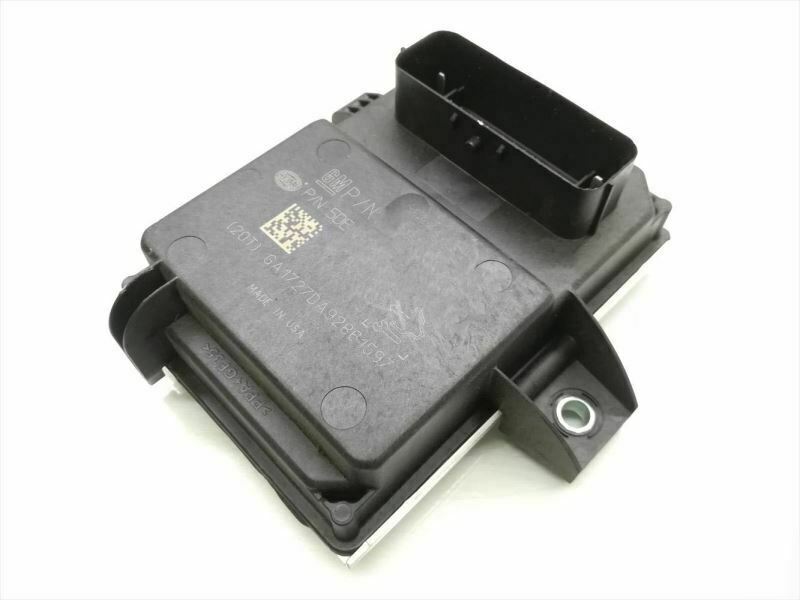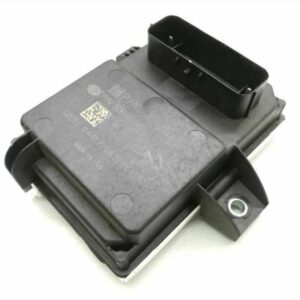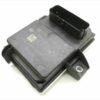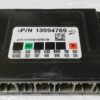Restore Your Vehicle’s Performance and Reliability
Are you dealing with frustrating engine hesitation, unexpected stalling, or a car that refuses to start? These are classic signs of a failing Fuel Pump Control Module (FPCM), also known as a Fuel System Control Module (FSCM). This critical component is the brain behind your fuel pump, regulating voltage to ensure your engine receives the precise amount of fuel it needs. When it fails, it can leave you stranded and facing a confusing diagnosis. In my 20+ years as a technician, I’ve seen these modules cause some of the most intermittent and hard-to-diagnose fuel delivery issues.
This isn’t just a replacement part; it’s a complete solution. We take a genuine GM module, part number 22874300, and professionally program it with the latest official software updates specifically for your vehicle. All we need is your VIN. This eliminates the expensive trip to the dealership and the need for specialized programming tools, turning a complex repair into a manageable one for both professional mechanics and dedicated DIYers. By installing this pre-programmed 2014 Caprice Fuel Pump Module, you’re not just fixing a problem—you’re ensuring your fuel system operates exactly as the manufacturer intended.
From the Diagnostic Bay: The Intermittent No-Start
A customer brought in a 2014 Chevy Cruze with a complaint that stumped two other shops: it would randomly fail to start, but only after sitting for a few hours. There were no consistent trouble codes, just an occasional low fuel pressure code (P069E) that would clear itself. We checked fuel pressure at the rail, and it was erratic during cranking on the rare occasions we could replicate the fault. Instead of just throwing a fuel pump at it, we hooked up a scope to the FPCM output. We saw the command from the ECM was fine, but the voltage signal from the FPCM to the pump was dropping out entirely. The module was overheating internally and failing intermittently. A new, pre-programmed FPCM like this one solved the issue permanently. It’s a great reminder that the problem isn’t always the pump itself.
Common Signs of a Failing FPCM
If your vehicle is exhibiting any of these symptoms, a faulty fuel pump control module could be the culprit. A failing FPCM can often mimic a bad fuel pump, making proper diagnosis key.
- ✔ Engine cranks but will not start
- ✔ Stalling, especially under load or when warm
- ✔ Severe engine hesitation or sputtering during acceleration
- ✔ Reduced engine power and poor fuel economy
- ✔ Check Engine Light with Diagnostic Trouble Codes (DTCs) such as P069E, P0230, or P025A
- ✔ A noticeable whining sound from the fuel pump area as it works erratically
A Straightforward Guide to Installation
Installing your new 2014 Caprice Fuel Pump Module is a direct replacement process. While the exact location varies by model (typically in the trunk or behind a rear quarter panel), the general steps are consistent. Always consult a service manual for your specific vehicle’s location and torque specs.
- Safety First: Disconnect the negative terminal from your vehicle’s battery to prevent any electrical shorts.
- Locate the Module: Find the old FPCM. On many sedans like the Cruze, Impala, or Caprice, it’s mounted on the right-hand (passenger side) inner quarter panel, often accessible through the trunk.
- Disconnect and Remove: Carefully unplug the electrical connector(s) from the module. Then, remove the nuts or bolts securing the module to the vehicle body.
- Install the New Module: Mount your new, pre-programmed module in the same location, securing it with the original hardware.
- Reconnect and Finalize: Plug the electrical connector(s) firmly into the new FPCM. Reconnect the negative battery terminal.
- Verify the Repair: Start the vehicle. It may take a few extra seconds of cranking for the fuel system to re-pressurize. Check for a smooth idle and ensure the Check Engine Light is off.
Verified Vehicle Compatibility
This module is a direct fit for a wide range of GM vehicles and is a compatible replacement for part numbers 22874299 and 22874300. Please verify your vehicle is on the list below. Providing your VIN during checkout is mandatory to ensure we load the correct software for your specific application.
- 2014 Cadillac XTS: (Right rear quarter panel)
- 2014 Chevrolet Camaro: 3.6L & 6.2L (Quarter panel behind right hand door)
- 2014 Chevrolet Caprice: (Fuel Pump)
- 2013-2014 Chevrolet Cruze: (RH inner quarter panel)
- 2014 Chevrolet Impala: (New style, VIN 1, RH rear quarter panel)
- 2013-2014 Chevrolet Sonic: (RH inner quarter panel)
- 2013-2014 Chevrolet Trax: (RH inner quarter panel)
- 2013-2014 Chevrolet Volt: (RH inner quarter panel)
- 2013 Buick Orlando: (RH inner quarter panel)
- 2013-2014 Buick Verano: (RH inner quarter panel)
- 2013-2014 Buick Encore: (RH inner quarter panel)
Frequently Asked Questions
Why do you need my VIN?
Why do you need my VIN?
Your Vehicle Identification Number (VIN) is essential because it allows us to program the module with the exact software calibration and updates specified by GM for your vehicle’s engine, transmission, and options. This ensures perfect communication between modules and optimal fuel system performance, eliminating the need for a dealer visit.
Is this a plug-and-play part?
Why do you need my VIN?
Your Vehicle Identification Number (VIN) is essential because it allows us to program the module with the exact software calibration and updates specified by GM for your vehicle’s engine, transmission, and options. This ensures perfect communication between modules and optimal fuel system performance, eliminating the need for a dealer visit.
Where is the 2014 Caprice Fuel Pump Module located?
Why do you need my VIN?
Your Vehicle Identification Number (VIN) is essential because it allows us to program the module with the exact software calibration and updates specified by GM for your vehicle’s engine, transmission, and options. This ensures perfect communication between modules and optimal fuel system performance, eliminating the need for a dealer visit.
Will this fix a P069E trouble code?
Why do you need my VIN?
Your Vehicle Identification Number (VIN) is essential because it allows us to program the module with the exact software calibration and updates specified by GM for your vehicle’s engine, transmission, and options. This ensures perfect communication between modules and optimal fuel system performance, eliminating the need for a dealer visit.
What is the difference between this and a part from a junkyard?
Why do you need my VIN?
Your Vehicle Identification Number (VIN) is essential because it allows us to program the module with the exact software calibration and updates specified by GM for your vehicle’s engine, transmission, and options. This ensures perfect communication between modules and optimal fuel system performance, eliminating the need for a dealer visit.



